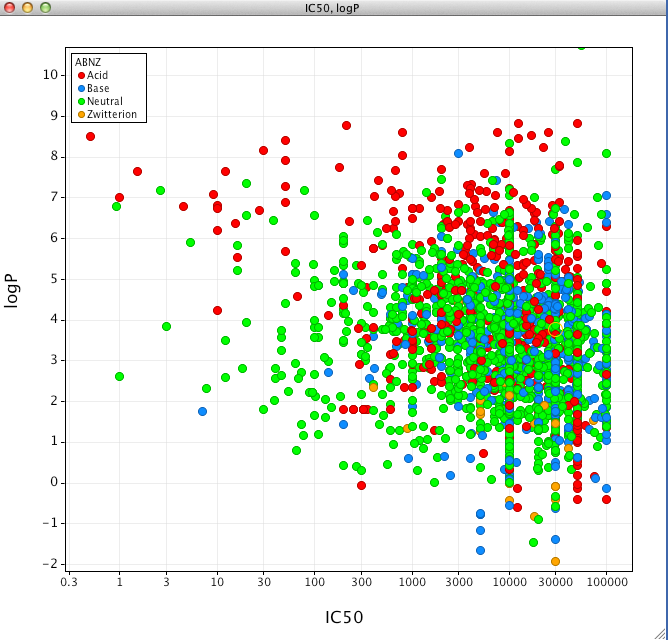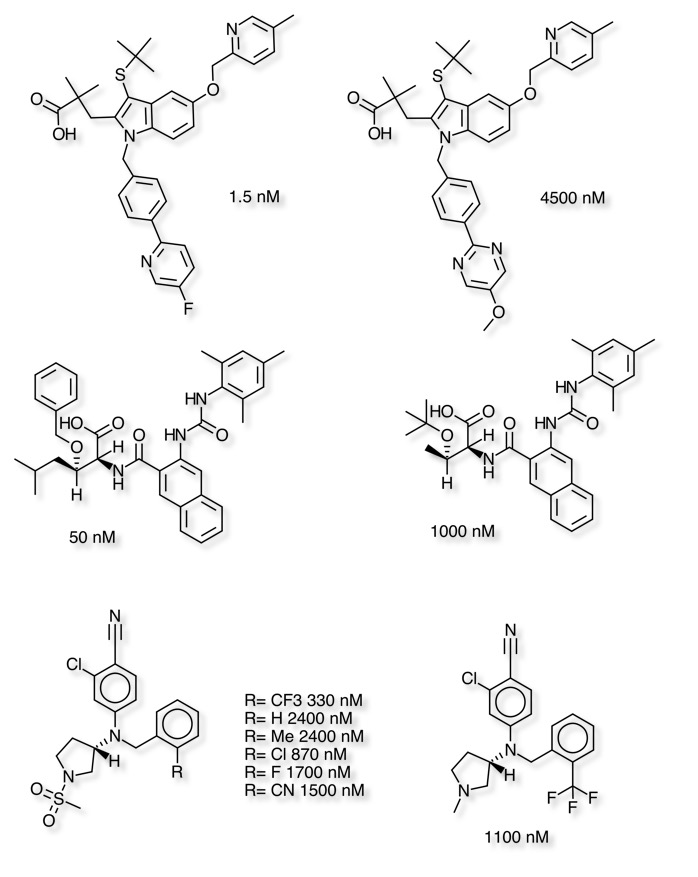Cytochrome 2C9 inhibition
The CYP2C9 gene is highly polymorphic. More than 50 single nucleotide polymorphisms (SNPs) have been described in the regulatory and coding regions of the CYP2C9 gene, some of them are associated with reduced enzyme activity compared with wild type in vitro. CYP2C9 has an important role in the metabolism of many Nonsteroidal anti-inflammatory drugs (NSAID) such as celecoxib, lornoxicam, diclofenac, ibuprofen, naproxen and flurbiprofen.
Active site of CYP2C9
The x-ray structure of human P450 2C9 complexed with flurbiprofen 1R9O has been solved. Arg-108 hydrogen bonds with Asp-293 and Asn-289 on helix I and interacts directly with the carboxylate of flurbiprofen. These interactions position the substrate over the iron for regioselective oxidation in a relatively large active site cavity.


CYP2C9 Inhibition Data from ChEMBL
ChEMBL](https://www.ebi.ac.uk/chembl/) is a database of bioactive drug-like small molecules, it contains 2-D structures, calculated properties (e.g. logP, Molecular Weight, Lipinski Parameters, etc.) and abstracted bioactivities (e.g. binding constants, pharmacology and ADMET data). Currently it contains data for 1,359,508 molecules and 9,414 different targets. ChEMBL contains data for CYP2C9 inhibitors, I downloaded all the IC50 data and imported it into Vortex, I then deleted those results that the ChEMBL team had flagged as potentially unreliable. Then I calculated a number of physicochemical properties using a variety of scripts.
Looking at the scatter plot below it appears that zwitterions and bases are less of an issue when it comes to CYP2C9 inhibition, in contrast lipophilic acids and to a lesser extent neutral molecules are more of a concern.

Matched Pair Analysis
Using Vortex to conduct a matched pair analysis helps to identify small changes that have a significant influence on the CYP2C9 inhibition. As might be expected many of the more potent inhibitors have a heterocycle that can coordinate to the iron in the haem ring of the cytochrome. The matched pair analysis identifies a number of examples where modification of the heterocycle has a significant effect on inhibition. Either by sterically encumbering the nitrogen proposed to coordinate to the iron, or by reducing the electron density on the nitrogen. An alternative approach has been to replace a pyridine with the bioisosteric fluoro or chloro phenyl. These results mirror those described in more detail on the CYP3A4 inhibitors and CYP2D6 inhibitors pages.
Whilst a number of lipophilic acids display potent CYP2C9 inhibition small changes have been shown to have a significant influence.

See Also
Last Updated 22 July 2014